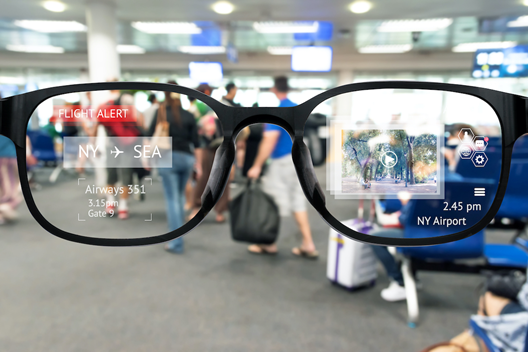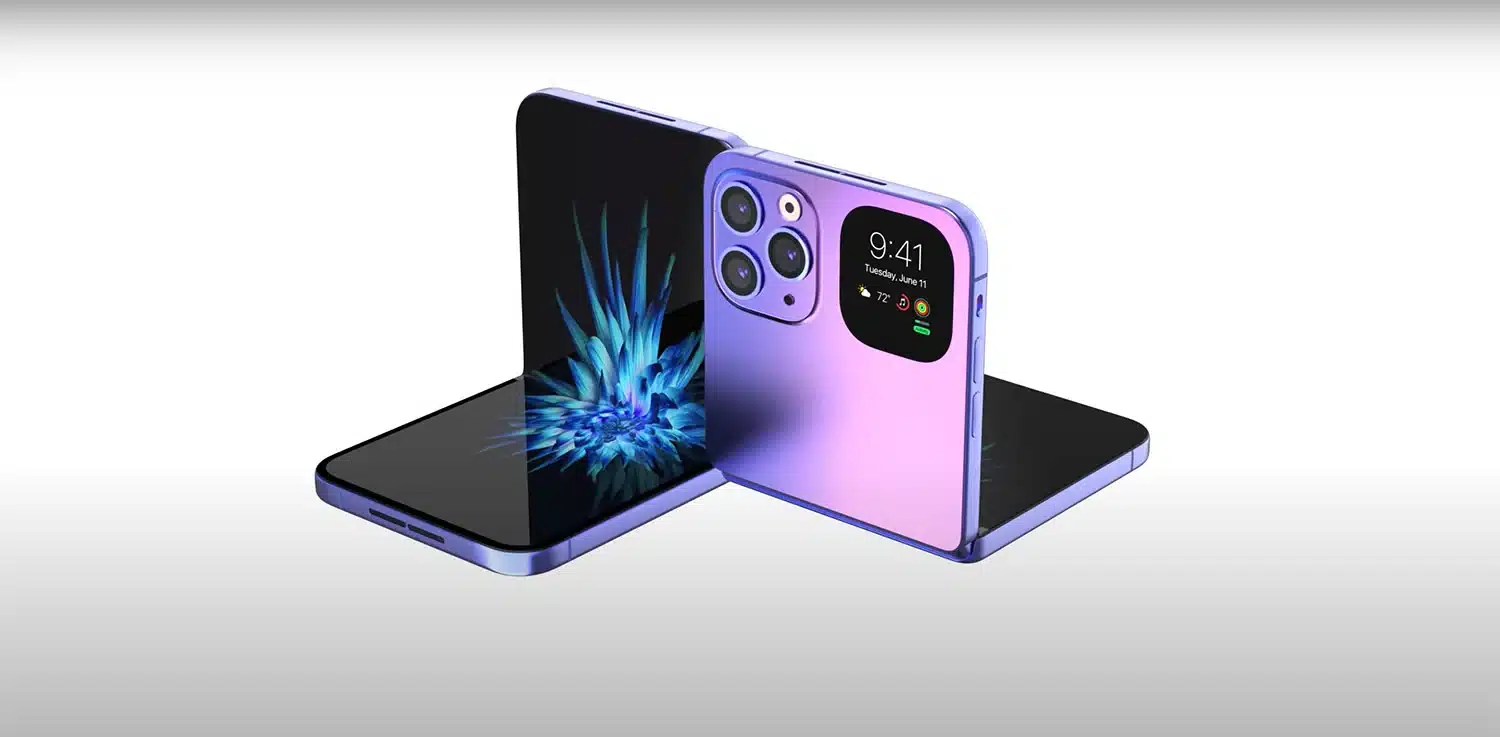Table of Contents
Apple has launched its most revolutionary product since the first iPhone. It is now reportedly working on expanding its innovative boundaries. The plan is to use not just one but two foldable iPhones and a foldable iPad. A reliable source at Apple confirmed this information to The Information. On that note, the tech giant has developed prototypes of two different sizes of their iPhones, which can be folded as clamshells like Samsung’s Galaxy Z Flip as opposed to Galaxy Z Fold’s horizontal opening.

This step by Apple shows it wants to penetrate the foldable display industry where companies such as Samsung, OnePlus, and Google are already present, thus meaning that customers will have an option of buying folding displays.
Why Is Apple Going for a Foldable iPhone?
Despite being niche in nature currently, the market for foldable smartphones is growing rapidly due to improved durability and the address of common problems like creasing screens and dust resistance. IDC forecasts reveal that there is going to be substantial growth in foldable phone shipments, suggesting that there might be a gap in Apple’s product lineup for those interested in this technology.
With increased margins possible from this new technology, Apple looks set to take away business from Samsung, which commands a significant market share. By introducing folding iPhones, Apple could grab users looking for large screens in new compact designs and driving upgrades from traditional smartphone form factors.
Report Claims That Durability Is a Challenge for Ultra-Thin Design
However, even with progress made by Apple regarding creating prototypes of folding iPhone models realizing an ultrathin design without compromising durability remains daunting. Moreover, having a small external display displaying minimal contents similar to what Samsung’s Flip 5 does adds complexity into designing and durability accorded with designs.
At some point though, Apple turned its attention towards developing a folding iPad instead of perfecting the foldable iPhone technology; however, continuously progressing two different sizes of foldable iPhones indicates that these challenges have been overcome by apple.
2025-2026 Launch Possible If Technical Issues Are Resolved
At first, forecasters such as Ming-Chi Kuo thought a 2023 release was on the cards. But now, it seems it might be in 2025 or 2026 instead. This setback tells us Apple is facing some challenges. They need to solve these if they want to make a folding iPhone that meets their own high standards.
Apple insists on maintaining its technology and user experiences. This echoes what the company stands for. It suggests that the foldable iPhone will only launch when it meets the firm’s strict standards for innovation and quality.
What to Expect from a Foldable iPhone?

Clamshell Design Similar to Galaxy Z Flip
Everyone’s excited about Apple launching its first foldable gadgets. It’s rumored they may use a design like Samsung’s Galaxy Z Flip, which folds like a clamshell. Besides being reminiscent of past models, this design therefore enables one-handed operation, compactness and can unfold into a mini-tablet in your pocket. Thus, this design not only looks back at history but also opens up a new era in smart-phone capabilities where convenience combines with sophistication.
Foldable iPhone: Two Size Options and Emphasis on Slim Profile
Apple is said to be entering the foldable market with two sizes. One will have an 8-inch display, like that of the iPad Mini when opened. Here, it is implied that Apple is targeting consumers at different levels. Apple offers choices that address individual needs and use cases. By stressing slimness, Apple implies that it cares for beauty as well as functionality in a bid to give it a sleek look even if its folding technology inherently makes this a tough task.
Exterior/Cover Display and Premium Price Tag
The inclusion of an external display on the front for notifications and information on-the-go without needing to fully open the device seems quite handy. The company is anticipated to charge high prices for such experiences considering there are very complex technologies involved in Apple’s foldable iPhone designs. This kind of pricing resonates with Apple’s standing as luxurious products within the market.
Implications to the Foldable iPhone Market
This could be a game changer for foldable phones because if Apple enters into it then other companies might follow suit causing mainstream adoption. Historically, Apple has been known to influence product categories and its potential foldable iPhone could potentially do that as well. By bringing legitimacy to foldable technology, apple may encourage interest and demand thereby challenging the incumbents while also stimulating innovation across sectors.
This trend creates excitement about apple’s forthcoming folding iPhone, showing how smartphones will change drastically in design and performance too. For competitors and customers alike; therefore, Apple’s step towards folding devices could reshape industry dynamics and marks a new phase in mobile tech.
Apple Invests Billions in AI Startups and AR/VR Initiatives, Shuns EV Project
Apple’s Strategic Focus on AI and AR/VR
Apple has substantial investments in artificial intelligence (AI). They also have substantial investments in augmented reality/virtual reality (AR/VR). This shows the company’s aggressive effort in innovation. They are retreating from electric vehicle (EV) endeavors. In the past few years, Apple has bought over 20 AI-based start-ups. They have also significantly expanded human resources in this sector. This will allow advanced AI algorithms to perform directly on devices like an iPhone. They won’t be dependent mostly on cloud computation. It involves making small versions of huge deep learning models. It also involves designing processors optimized for the tough tasks of artificial intelligence.

Vision Pro’s Market Challenges
The Vision Pro headset was launched with a price tag of $3,499. This price is beyond the reach of ordinary customers. The product targets more of an enthusiast market. Tim Cook described it as a “breakthrough device.” However, analysts expect sales will be limited because of its high cost. This situation echoes Apple’s previous launch strategy. Premium, revolutionary products come first. Then, more affordable variants follow.
Foldable iPhone: Shifts in the Apple Car Project
Apple’s attempts to enter the automobile business have met significant challenges. This requires a scale back on the project’s scope and timeline. The project has been reoriented. It is now expected to debut in 2028, delayed because of the change from fully autonomous to advanced driver-assist technology. These instances show how complex automotive revolutions are even for giants like Apple.
Implications for Apple’s Future Innovations
Apple’s AI and AR/VR strategic investments show its commitment to leading the next wave of tech. The reset on its car project also demonstrates this commitment. Vision Pro and the expected foldable iPhone and iPad are Apple’s immediate entry points into new product categories. However, AI progressions promise the richest opportunity for dramatic device experiences in the long term.



